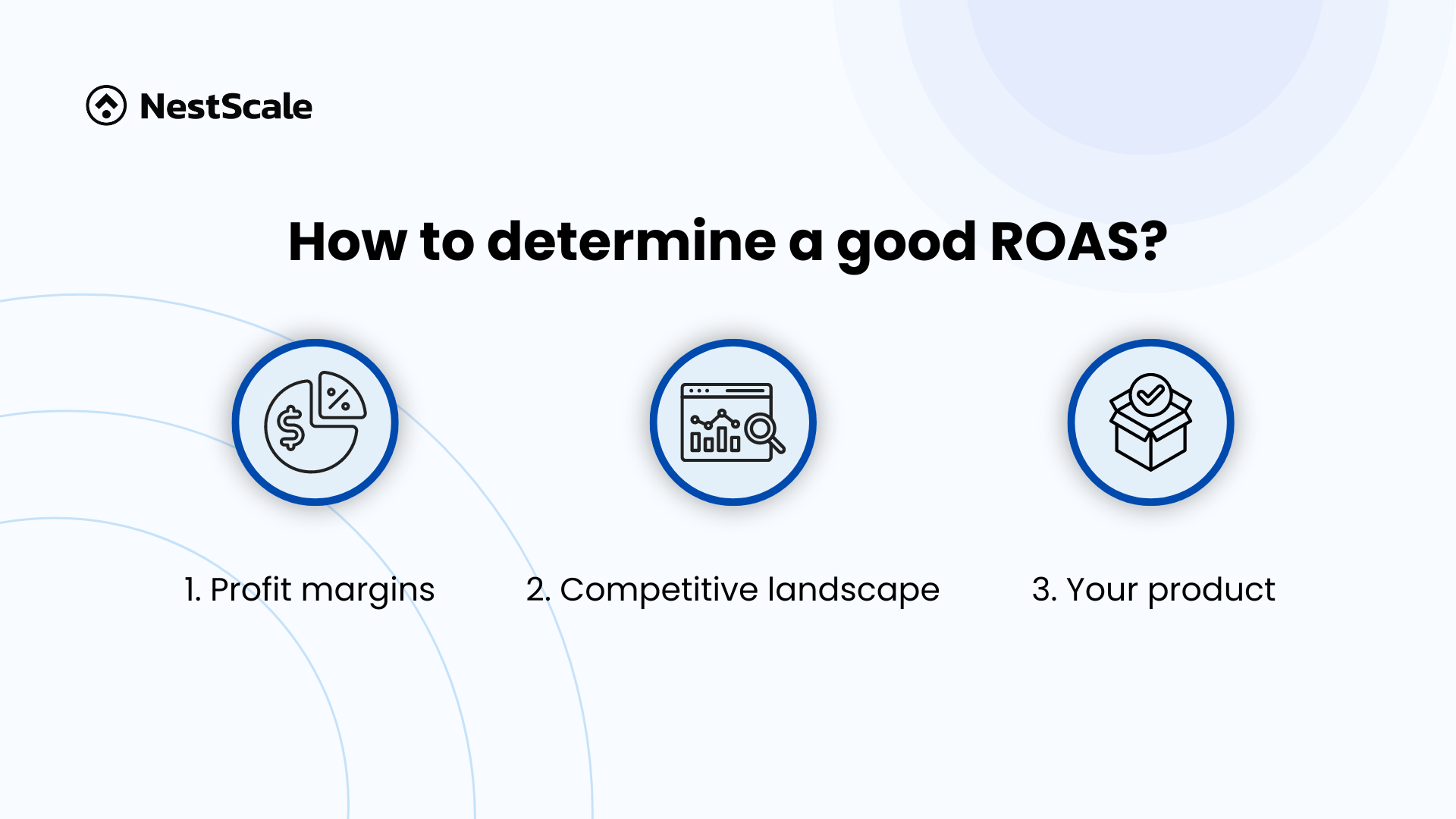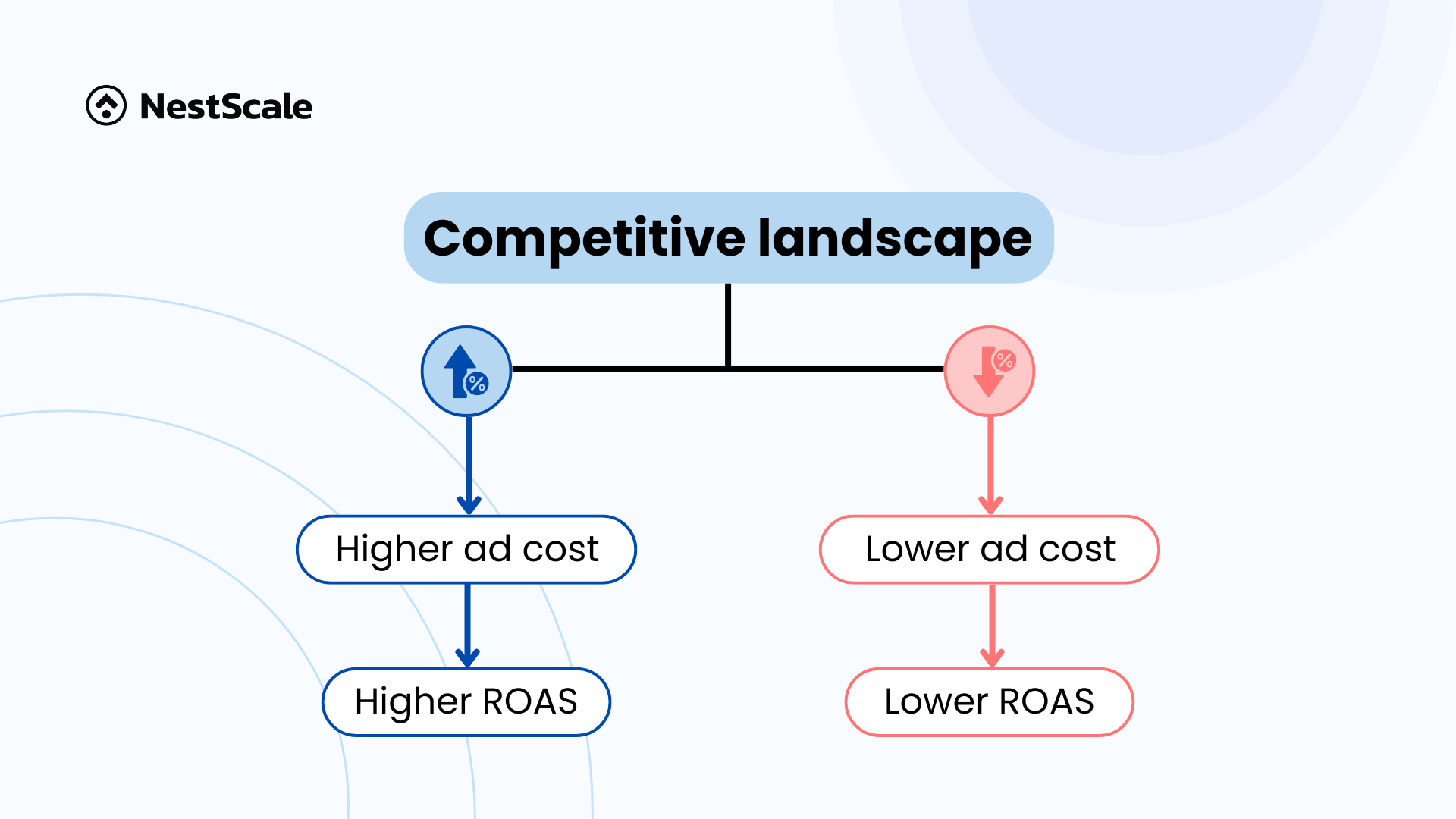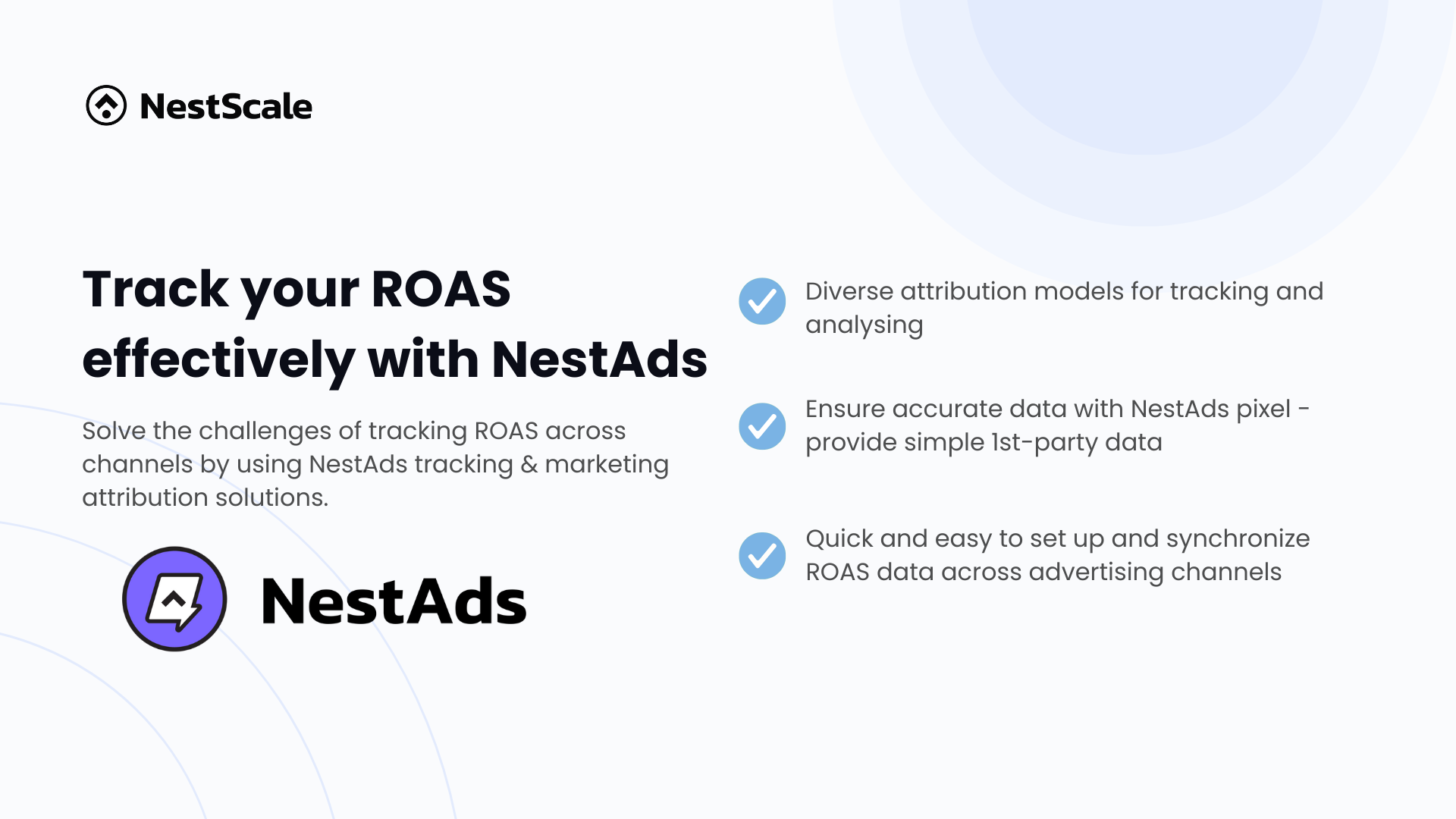On July 12, our latest LinkedIn Live session, ROAS Mastery: Agency Insights and Solutions Unveiled for Cross-Channel Success, was an enlightening experience for all attendees. We had the privilege of hosting industry leaders who shared their expertise on maximizing ROAS across multiple channels. Whether you missed the live session or want a detailed recap, this blog covers all the critical insights and actionable strategies discussed.
Overview of the Linkedin Live session
We were honored to have a panel of distinguished speakers who brought a wealth of knowledge and experience:
- Darren Earney, Partnership Director at ElevateOM
- Tom Gatenby, Creative Director at SquashPixel
- Derrick Le, CEO and Co-founder at NestScale
- Simon Jones, Founder of CodExtensions and our insightful moderator

Darren kicked off the session by discussing key factors that impact marketing performance and shared best practices for achieving better ROAS. Derrick then tackled the challenges of cross-channel marketing analytics, emphasizing the importance of advanced attribution tools. Tom highlighted the crucial role of great UX design in marketing, offering practical tips to enhance your website’s impact. Simon, as our moderator, kept the discussion flowing smoothly, ensuring all the key takeaways were highlighted.
Each speaker provided unique insights on optimizing ROAS, addressing challenges, and implementing effective solutions.
Key takeaways of the live session
Ready to unlock the secrets to maximizing your advertising ROI? Dive into our expert insights and discover practical strategies that can transform your marketing efforts. From setting realistic ROAS goals to overcoming common challenges, our panelists shared invaluable tips that you won’t want to miss.
How to determine a good ROAS for Shopify merchants
ROAS is a key metric for e-commerce merchants to determine if they are making a profit and if their marketing strategies are effective. Therefore, understanding what constitutes a good ROAS was one of the most frequently asked questions during our live session. There is no universal benchmark for ROAS, as it varies across industries. However, according to our experts, the factors that play a crucial role in setting realistic and achievable ROAS targets include:

Based on the profit margins of your store
Darren emphasized that understanding your store’s profit margin is fundamental. A higher profit margin generally allows for a lower ROAS target, as you have more flexibility in spending. Conversely, if your profit margins are thin, you’ll need a higher ROAS to ensure profitability.
Based on the competitive landscape of your niche
In addition to the profit margins, it’s also important to understand the competitive landscape of your niche when determining ROAS. In niches with less competition, achieving a higher ROAS is often easier. The reduced competition means lower ad costs, making it easier to reach customers efficiently and effectively, thus leading to a higher ROAS.
Conversely, in highly competitive niches, achieving a high ROAS can be more challenging due to increased ad costs. With more competitors vying for the same audience, the cost of showcasing your ads to potential customers rises, thereby reducing your ROAS.

Moreover, knowing where your business stands in the market is crucial; if your brand has strong recognition, you’re more likely to attract customers and achieve a higher ROAS. By conducting competitive analysis and leveraging your brand strength, you can set realistic ROAS expectations and develop strategies to stand out, even in crowded markets.
Based on your product
Lastly, the value of your products plays a significant role in determining your ROAS goals. For lower-priced items, such as socks, customers typically make quick purchasing decisions. Hence, your ads can easily convert them, leading to stable and higher ROAS.
In contrast, high-ticket items like furniture require more effort and multiple touchpoints to convert customers. This often means spending more on ads across different channels to educate and engage potential buyers, making it challenging to achieve a stable ROAS.
Challenge when measuring and optimizing ROAS
Measuring ROAS accurately can be fraught with challenges. Our panelists identified several common issues that merchants face:
- Data discrepancies: Different platforms may report different data, leading to discrepancies that complicate accurate measurement. Ensuring data integrity and consistency is essential for reliable ROAS calculation.
- Complicated customer journeys: The customer journey is not linear; it varies widely across different segments and channels. Understanding and tracking these journeys accurately is crucial for correct ROAS measurement.
Solutions to measure and improve your ROAS
Our experts shared several solutions to overcome these challenges and improve ROAS measurement and performance:
Use attribution models
Derrick highlights the importance of using attribution models to gain a clearer picture of channel performance. These models help you understand which touchpoints are driving sales and how different channels contribute to the customer journey.

Our expert suggested starting with simpler models, such as last-click or first-click attribution, to gather initial data and learn about your platform’s performance. Once you have a solid understanding, you can move on to more sophisticated models that attribute the right amount to each channel, providing a more accurate and detailed view of your marketing effectiveness.
Experiment with A/B testing
Another measure highlighted by Tom is to try A/B testing for both your ads and your website. You can gain valuable insights into what works best by experimenting with different creatives, CTA, audiences, and bidding strategies.
This process involves running small-scale tests to see which versions of your ads perform better, allowing you to make data-driven decisions and optimize your campaigns effectively. Spending a little on A/B testing upfront can provide the feedback needed to enhance your ad performance and ensure your strategies are on the right track.
Be specific with your niche
Lastly, it’s preferable that you can tailor your strategies to their specific niche. Understanding the intricacies of your audience and niche allows for more targeted and effective ad campaigns, leading to better ROAS. In a crowded market with millions of competitors, it’s crucial to highlight your expertise and what sets you apart.
By making your unique strengths prominent, you can attract the right audience to your website and stand out on the SERP page, ultimately driving more successful ad campaigns.
Checklist to use when measuring your ROAS
When measuring ROAS, it’s essential to focus on several key aspects to ensure accuracy and relevance:
- Transparency: Ensure that your tracking and reporting tools provide transparent data. Clear visibility into your ad performance metrics is crucial for making informed decisions.
- Streamline ROAS across channels: Integrate data from all your marketing channels to get a unified view of your performance. This helps in understanding the holistic impact of your campaigns and optimizing cross-channel strategies.
- Goal-driven ROAS: Set clear, goal-driven ROAS targets aligned with your business objectives. Whether it’s increasing revenue, expanding market share, or improving brand awareness, having specific goals helps in steering your ad strategies effectively.
Live session recording & NestAds demo
If you missed the live session or want to revisit the discussions, you can watch the recording on our LinkedIn page. Additionally, we offered an exclusive demo of NestAds during the session. NestAds is our ad tracking and marketing attribution software designed to help you centralize data, track metrics, and optimize your ad performance across multiple platforms seamlessly.

For more information on how NestAds can help you optimize your marketing strategies and achieve better ROAS, check out our website or book a personal demo. Let’s take your advertising ROI to the next level!
Wrap up
Our LinkedIn Live session provided a comprehensive overview of ROAS optimization, from determining good ROAS benchmarks to tackling measurement challenges and implementing effective solutions. The insights shared by our expert panelists are invaluable for any merchant looking to maximize their advertising ROI.
As we wrap up, it’s important to remember that ROAS is not just a number but a reflection of how well your ad strategies are working. By focusing on accurate measurement, continuous optimization, and a thorough understanding of your market, you can achieve significant improvements in your advertising performance.





















































